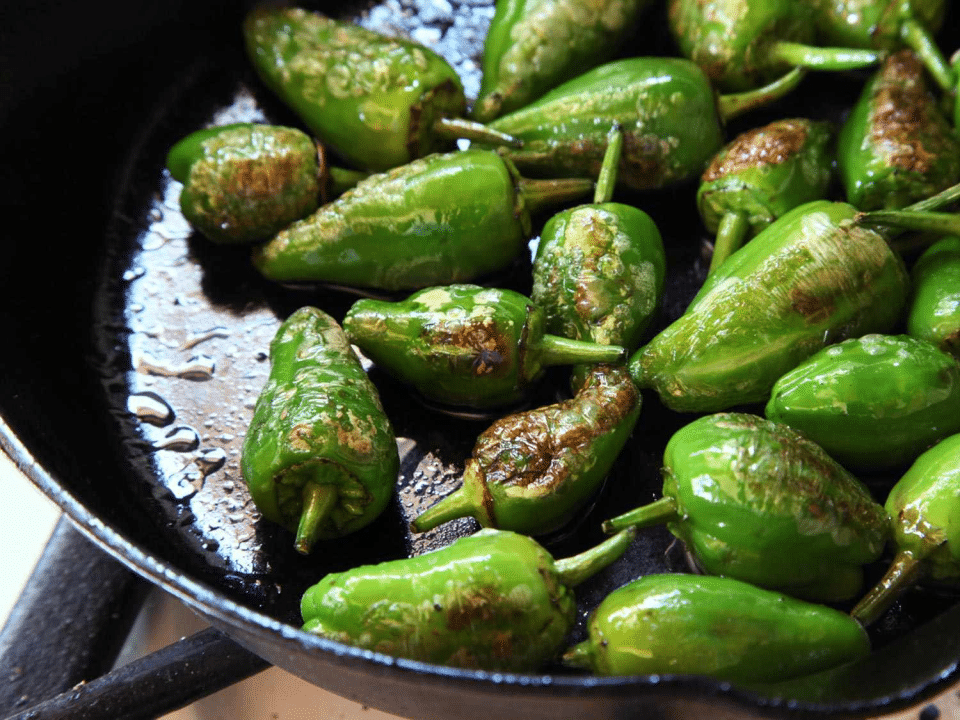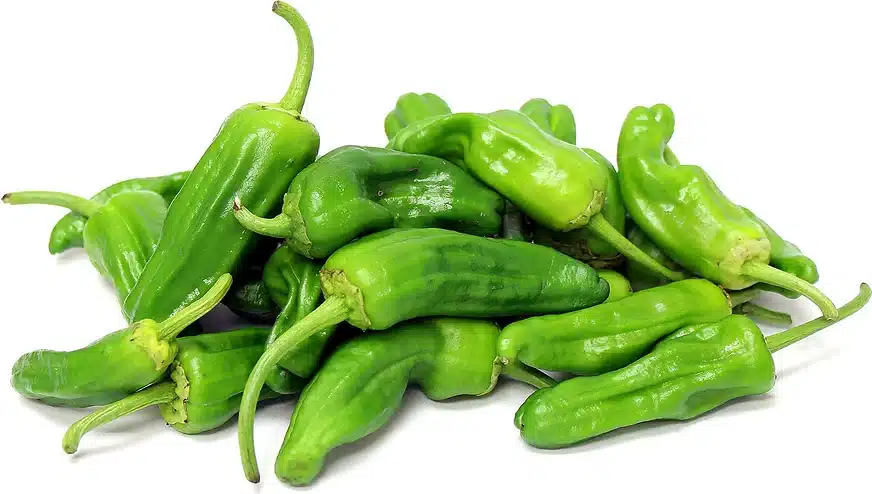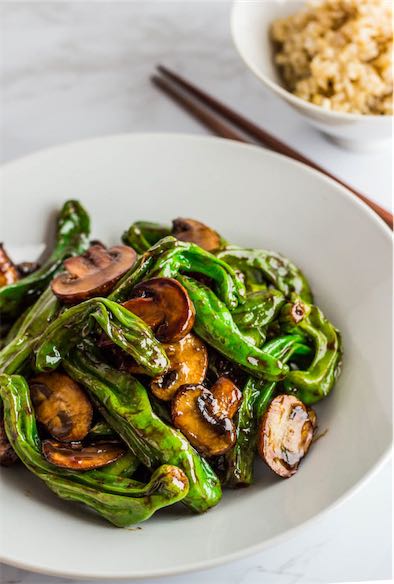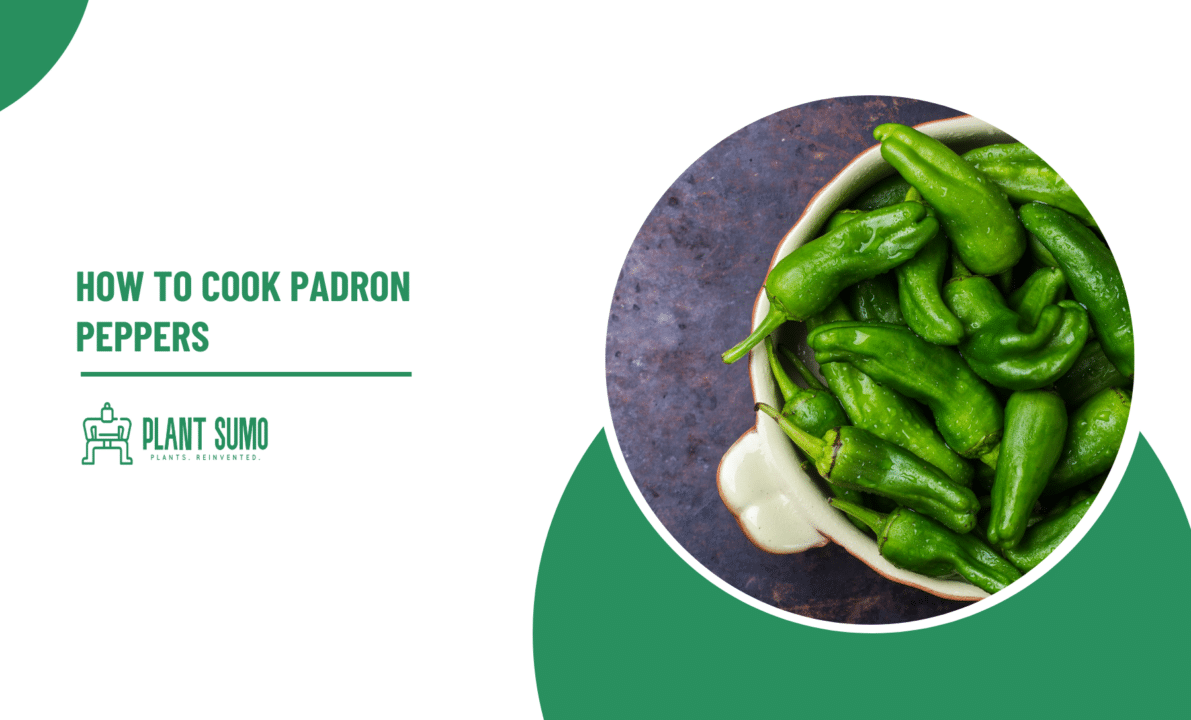How to Cook Padron Peppers
Are you tired of your everyday culinary routine? Do you fancy a little gastronomic excitement? Well, let us introduce you to Padron peppers, the pint-sized ingredient that will certainly add some spark to your menu. This article is a one-stop shop for all things Padron: what they are, where to find them, their nutritional value, and how to cook padron peppers to transform them into tantalising dishes in your kitchen.

What are Padron Peppers?
Padron peppers, otherwise known as Pimientos de Padrón, are small, green peppers originally from the town of Padrón, situated in the lush, rainy region of Galicia, northwestern Spain. Despite their humble size, these peppers carry with them a rich cultural history and a unique culinary surprise.
Named after their town of origin, Padron peppers are integral to Spanish cuisine, particularly in their home region. They’re traditionally served as tapas, showcasing the Spanish love for shared, simple, yet flavourful meals. However, their appeal isn’t limited to their country of origin. Over recent years, food lovers worldwide, including the UK, have been discovering and delighting in these small but mighty peppers.
The distinguishing feature of Padron peppers is their unpredictability. While they are usually harvested while still green and immature, their heat level varies from pepper to pepper. Most of them are mild, but occasionally, you might get a hot one, thanks to capsaicin, the compound that gives peppers their heat. This culinary game of roulette adds a dash of excitement to every serving.
Padron peppers typically measure between 1 to 1.5 inches in length, making them an ideal one-bite appetiser. Their shape is generally elongated, and they’re often slightly wrinkled or curled. The skin is thin, and when cooked, it blisters and chars easily, adding a delightful smoky flavour to the naturally sweet and slightly grassy taste of the pepper.
The growing and harvesting process also contribute to the charm of Padron peppers. They are typically harvested in the summer, and the pepper plants thrive in the warm, humid climate of the Galician countryside. The annual Fiesta de Pimiento de Padrón, a festival celebrating this humble pepper, showcases the cultural importance of this crop in Padrón, featuring music, dancing, and of course, lots and lots of peppers.
Now that you know a bit more about what Padron peppers are, it’s time to explore how to find them, how to prepare them, and how they can contribute to your healthy, flavourful diet.
How to Find and Buy the Best Padron Peppers

In the UK, Padron peppers are becoming increasingly popular, and you can usually find them in most large supermarkets and specialized greengrocers. They’re also readily available online from various gourmet food shops.
When buying Padron peppers, look for a vibrant, uniform green colour, with a firm texture. Avoid those with dark blemishes, spots, or wrinkling, as these are signs of age or poor storage.
Remember that Padron peppers are usually sold fresh during the summer months, which is their natural growing season. However, they can also be found jarred or canned year-round, perfect for adding a splash of summer to your dishes even in the depths of winter.
Shishito peppers are a good substitute if you can’t find Padron peppers but still want to cook with them. They’re small, green, and elongated like Padron peppers. On the other hand, Shishitos are less likely to be hot, making them a little less risky for those who don’t want watery eyes with their pepper consumption.
Nutritional Value of Padron Peppers
Not only are Padron peppers delightful in taste, but they also pack quite a punch in terms of nutritional value. A 100-gram serving is low in calories and fat, making them an excellent choice for those watching their waistline.
These little green gems are rich in dietary fibre, vitamin A, C, and K, and also provide a good amount of essential minerals like potassium and iron. Vitamin A is good for eyesight, while vitamin C helps in strengthening the immune system and maintaining healthy skin. Vitamin K plays a significant role in bone health and wound healing, and dietary fibre aids digestion.
What Do Padron Peppers Taste Like?
The taste of Padron peppers is one of the reasons for their rising popularity. They have a unique flavour profile, combining sweet, slightly grassy notes with a hint of mild heat. Most Padron peppers are relatively mild, but around one in ten will be notably hotter, adding an unexpected twist to each batch you consume. This element of unpredictability is what makes eating Padron peppers such a fun and enjoyable experience.
How to Cook Padron Peppers
Preparing Padron peppers is as simple as it gets, and this traditional Galician dish requires just three ingredients: peppers, olive oil, and sea salt.
- Rinse the peppers in cold water and pat dry.
- Heat a generous amount of olive oil in a large frying pan over medium-high heat.
- Add the peppers to the pan and cook them, occasionally shaking the pan, until the skins blister and the peppers soften, around 5-7 minutes.
- Remove them from the pan, sprinkle with sea salt, and serve immediately.
- They’re typically eaten as tapas in Spain, but they make a fantastic appetizer or side dish for any meal.
Padron Pepper Recipes

Here are four exciting vegan-friendly recipes featuring Padron peppers. Each of these recipes brings out the unique flavour of the Padron peppers while keeping the ingredients animal product-free.
Padron Pepper Tapas with Smoked Paprika Aioli
Cook the peppers in the basic way described above, then serve them with a vegan aioli. To make the aioli, blend together silken tofu, garlic, lemon juice, olive oil, and smoked paprika until smooth.
Padron Pepper and Tomato Skewers
Alternately thread Padron peppers and cherry tomatoes onto skewers. Brush them lightly with olive oil and grill until the peppers are blistered and the tomatoes are starting to burst. Finish with a squeeze of fresh lemon juice and a sprinkle of sea salt.
Spicy Padron Pepper and Corn Salad
Grill Padron peppers and fresh corn until charred, then chop the peppers and cut the corn off the cob. Toss them with diced red onion, chopped fresh coriander, lime juice, olive oil, and salt. This salad is perfect for a summer BBQ!
Padron Pepper and Mushroom Stir-Fry
Heat some olive oil in a pan and add sliced mushrooms, allowing them to brown. Add the Padron peppers and continue to stir-fry until they’re blistered. Add minced garlic, soy sauce, and a splash of rice vinegar, then cook for another minute. Serve this stir-fry over steamed rice for a quick and satisfying meal.
Each of these recipes brings out the unique flavour of the Padron peppers while keeping the ingredients animal product-free.
There you have it — a comprehensive guide to the fiery, unpredictable delight that is the Padron pepper. Ready to go and spice up your culinary life? We thought so. Happy cooking!
How to Cook Padron Peppers FAQ
No, they’re not. Most Padron peppers are mild, with a heat level similar to a bell pepper. However, roughly one in ten will be notably spicier, akin to a jalapeño. The fun (or fright) is in the surprise!
Padron peppers are usually harvested in the summer months. However, they can be found jarred or canned year-round in many supermarkets and online gourmet food shops.
Yes, they are. Padron peppers are low in calories and fat, and rich in dietary fibre, vitamins A, C, and K, as well as essential minerals like potassium and iron.
Fresh Padron peppers should be stored in the refrigerator, ideally in a paper bag, where they will last for about a week.
The traditional Galician method is to sauté the peppers in olive oil until their skins blister, then season them with coarse sea salt.
Shishito peppers are a good Padron pepper substitute as they have a similar size, flavour, and heat profile. However, note that they lack the occasional spiciness that characterizes Padron peppers.
Padron peppers are typically served as an appetiser or a tapas dish. However, they pair well with a variety of foods such as other grilled veggies, seafood, and can also be a part of salads, stir-fries, and even pizza toppings.
Absolutely! Padron peppers are plant-based and perfectly suitable for a vegan diet. They can be prepared in many creative, vegan-friendly ways.
Padron peppers are available in most large supermarkets, specialized greengrocers, and online gourmet food shops in the UK.
Yes, they can be grown in the UK. They are best started indoors in late winter or early spring and then transferred outdoors after the risk of frost has passed. Like other peppers, they prefer sunny, warm conditions.






